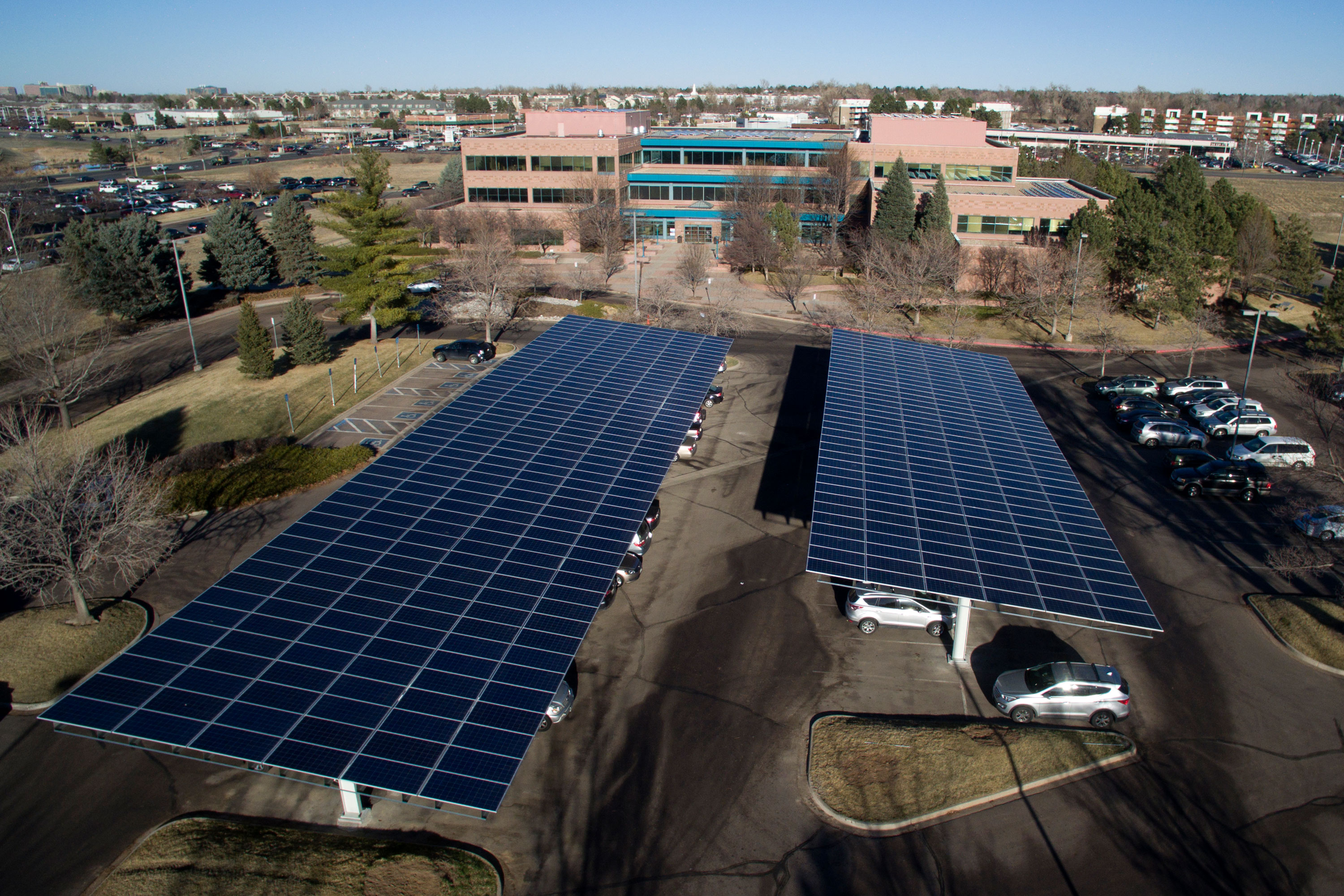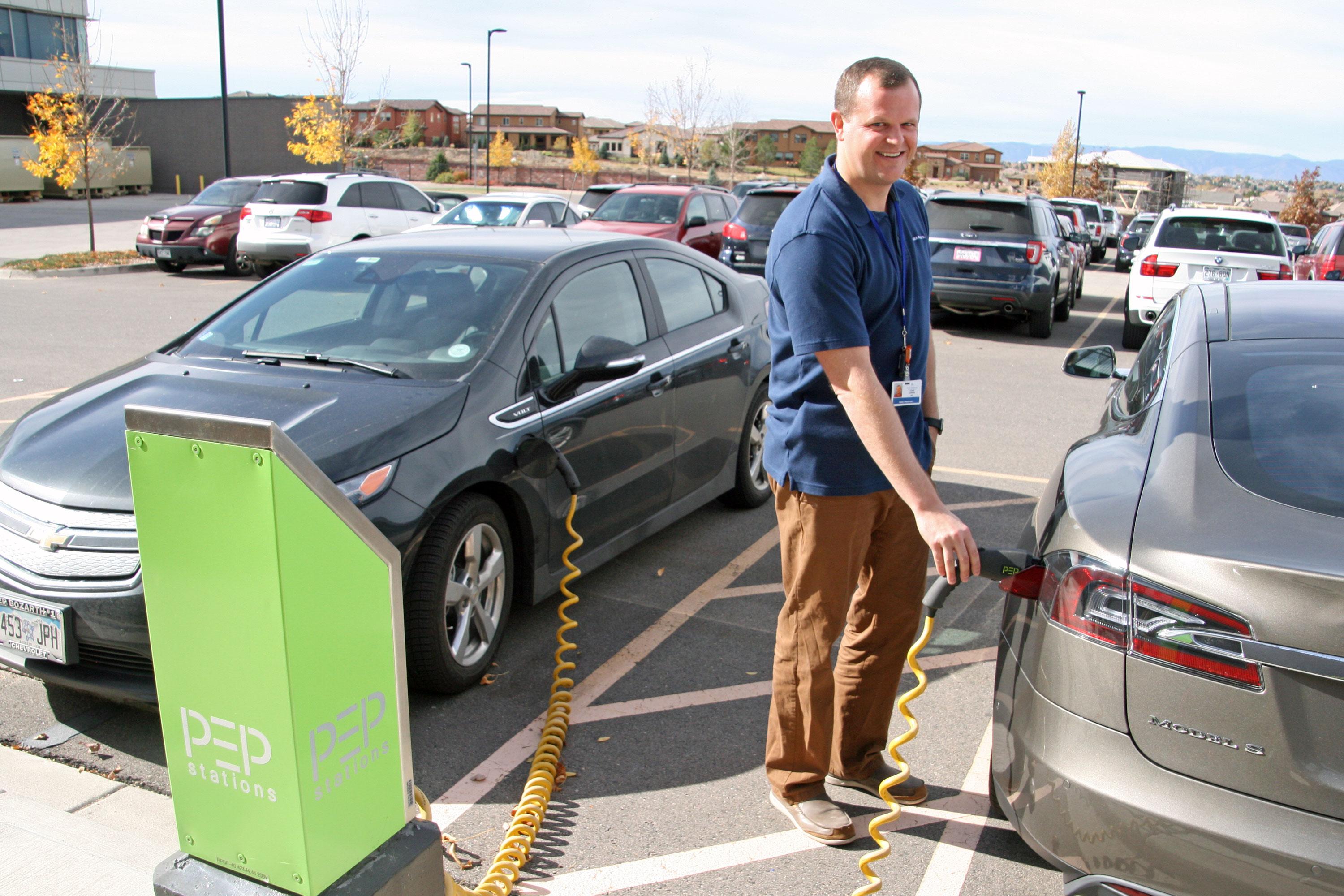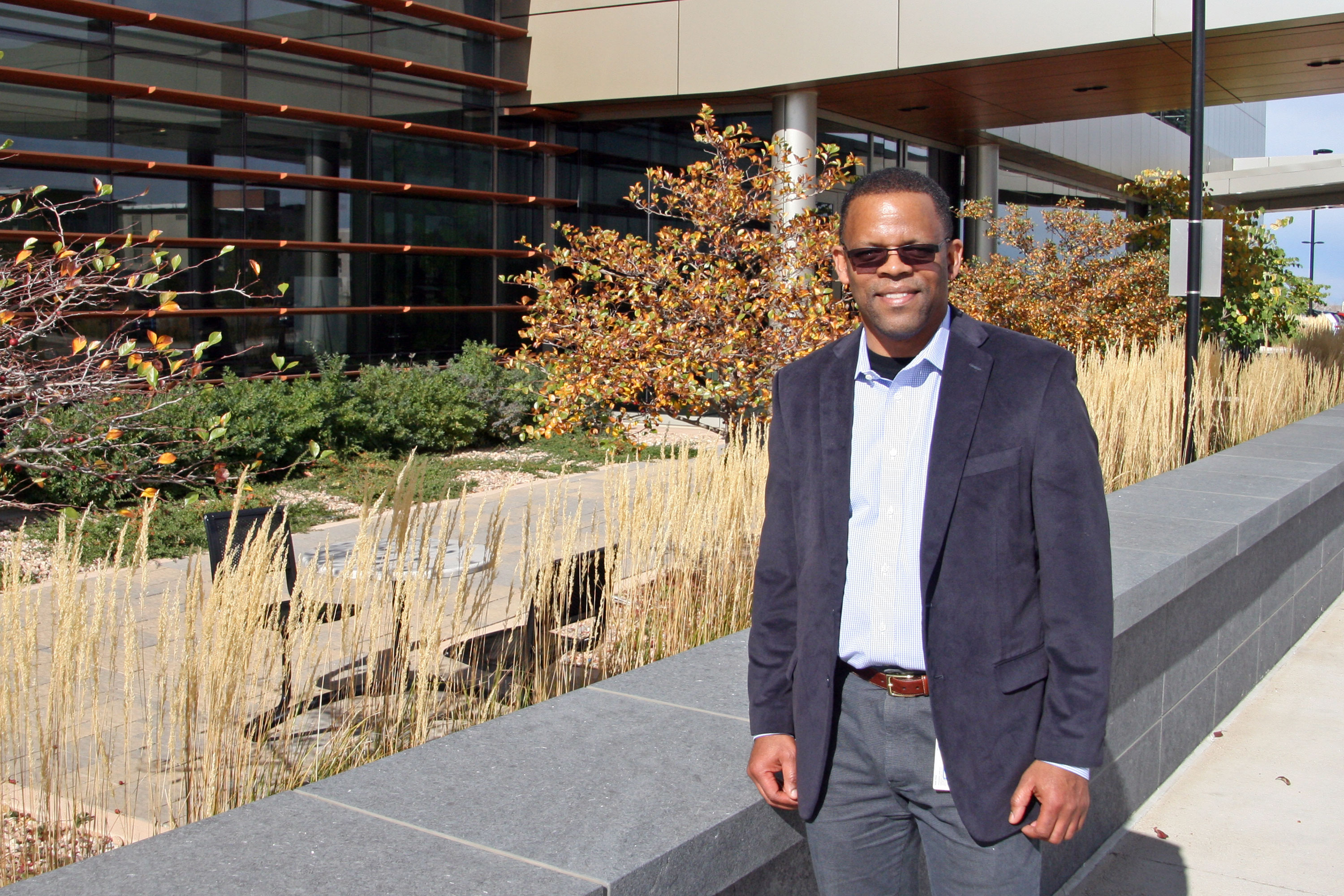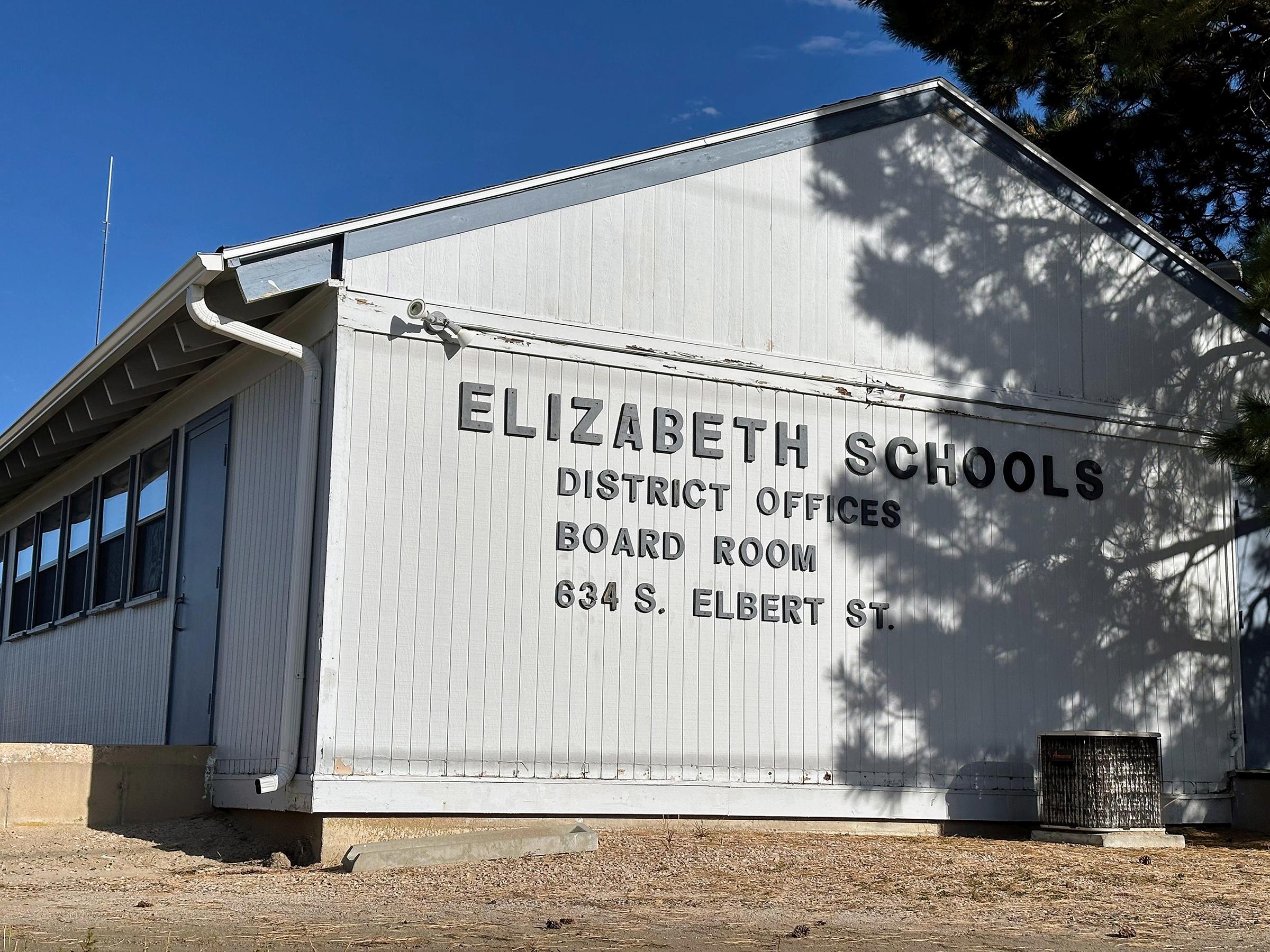
Standing in a parking lot outside his office, cable in hand, Dr. Adam Carewe plugs in his electric car.
“Obviously, by me driving this car,” Carewe said as it starts to charge, “I’m a big proponent of renewable energy.”
The reason this charging station is unusual, is that’s in the parking lot of Kaiser Permanente’s Lone Tree Medical Offices. As a KP employee — Carewe is a family physician — he can plug his car in, for free. Anytime. “I think it’s great that Kaiser is investing in (renewables and energy efficiency), because I think it’s clearly the future,” he said.

Kaiser’s leaders agree. The nonprofit health system, which operates in eight regions and 11 states, has made it a priority to go green. The health provider’s environmental investments include waste reduction and water conservation as well as new buildings that have won awards for energy efficiency. Roland Lyon, a regional president of the Kaiser Foundation Health Plan, said it fits with their larger mission of improving health.
“Environmental health and the impact that has on the health of a community are so tightly correlated,” Lyon said.
Research, Lyon said, shows environmental factors like air pollution have twice the impact on people’s health than access to high-quality medicine. And having “a healthy environment, which supports healthy living” works both toward their mission and the “bottom line,” Lyon said.
Kaiser Permanente, the nation’s largest integrated health system, has set a series of ambitious green goals for 2025. They include becoming “carbon net positive,” which means purchasing enough clean energy and carbon offsets to remove more greenhouse gases than it emits. Kaiser also aims to buy all its food locally or from sustainable farms and producers, and to reduce its water use by 25 percent per square foot of buildings.
Kaiser’s initiatives in Colorado have resulted in approximately 6 percent aggregate energy consumption savings since efforts began a few years ago, said spokesman Nick Roper. A typical KP medical office in Colorado now uses less than half the energy per square foot of the average similar building across the U.S. “All of our energy reduction work has, we estimate, helped save millions of dollars in just a few short years,” Roper said.
Often, the original investment eventually saves money over time. The price to install electric car charging ports, for example, cost around $15,000 per unit. But that, said Roper, “is offset by our energy cost savings over time.”
At Kaiser’s Arapahoe Medical Offices in Centennial, executive Clayton Mitchell points out the solar panels that are “sort of arrayed toward the south.” In a state with 300 sunny days a year, these solar panels provide more than half the electric energy needed to power the adjacent medical office building. For Mitchell, who heads up Kaiser’s investments in renewables, it is tangible savings. “Fifty-five percent,” he said. “Roughly over 25 years, we anticipate getting $160,000 in energy savings, in cost savings.”

Seven of their Colorado facilities have installed solar systems through what's called a power purchase agreement. It’s a deal between KP, solar developer Namaste and Xcel Energy. Mitchell said the partnership lets Kaiser lock in low energy rates for the next 20 years, “which makes it very affordable” and “drops our operating costs.”
The money Kaiser saves on energy can instead go to other things, like contributing to lower health insurance and care costs for customers, better technology, nursing and medical scholarships, said Kaiser spokesman Nick Roper. “The list goes on,” he said.
KP is one of a growing number of brands like Walmart, Target, Google and Apple investing in renewable energy. Rebecca Cantwell, executive director of the Colorado Solar Energy Industries Association, said these companies are doing it because of the health benefits, as well as the pure economic self-interest. “I don’t think any large corporation makes decisions that don’t pencil out for them economically,” Cantwell said.
With solar catching on globally, Cantwell said, “what’s really happened with the price of solar is dramatic,” with it plummeting by more than 50 percent in a decade.
Government policy played a big role as well. Solar and wind took off in Colorado after its voters became the first to pass a renewable energy standard in 2004. The standard requires the state to get 30 percent of its electricity from renewables by 2020.
Since 2006, Xcel has added 30,000 rooftop solar customers, including 1,650 businesses, said spokesman Mark Stutz. As the state’s largest utility, Xcel serves about 60 percent of the state’s population with either electricity, natural gas or both.
Wind will represent about 28 percent of Xcel’s energy mix by 2020, Stutz said, with solar representing about 6 percent. The utility anticipates adding another 600 megawatts of wind capacity, and approximately 400 megawatts of community and rooftop solar by the end of 2019.
Demand from businesses, like Kaiser, is growing and Erin Overturf, a senior staff attorney with Western Resource Advocates, describes it “as flourishing and untapped.”

Still, she said, solar currently represents just one and a half percent of Xcel’s electricity mix in Colorado.
Some wonder if demand for renewables will drop if the new Trump administration cracks back on tax credits -- credits that jumpstarted the industry. U.S Rep. Diana DeGette, a Denver Democrat, fears the answer is that “we’re going to see a big assault on this.”
Overturf isn’t so sure. Congress, with bipartisan support, passed a five-year extension of renewable tax credits in 2015. On top of that, energy regulation, she said, is mostly done by states. Colorado will continue to lead Overturf thinks and she doesn’t “see that changing anytime in the near future.”
Kaiser’s Roland Lyon expects the health system will keep investing in renewables, even if the new administration turns out to be less than supportive.
“No matter the politics in Washington, we think this is a good investment,” Lyon said — after all, he said, it’s not a political decision, but a business one. But many eyes will still turn to Washington D.C. to see how a new administration will shape energy policy and how that will influence business decisions to go green.









